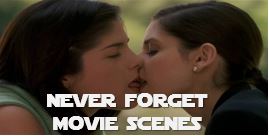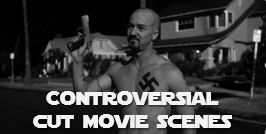[ad_1]
A few characters from Star Wars: A New Hope awesomely make an appearance in Rogue One. These characters were brought back to life in CGI form. I won’t tell you who they are right now in case you haven’t seen the movie yet, but Lucasfilm discusses their decision to bring these characters back to life as well as the work that went into making it happen with the New York Times.
One of the biggest surprises in the film for me was how big a role Grand Moff Tarkin played in Rogue One’s story! I already knew he would be in the film, but I didn’t think his part would be that big, so that was awesome. I thought ILM did an amazing job bringing this character played by Peter Cushing back to life.
There was a bit of controversy surrounding this decision because Cushing died in 1994, and there have been debates about the ethics of “prolonging the life span of a character and his likeness beyond that of the actor who originated the role.” They did have permission from the Cushing estate to do it, and I think that’s what ultimately eased everyone’s mind.
When talking about the character, Kiri Hart, a Lucasfilm story development executive and “Rogue One” co-producer said:
“If he’s not in the movie, we’re going to have to explain why he’s not in the movie. This is kind of his thing.”
To bring Tarkin back to life they hired an English actor named Guy Henry who has the same physical build as Cushing and could also speak in similar voice and tone. They strapped him up with motion-capture gear on his head so that they could digitally reconstruct his face with CG technology. It’s described by John Knoll, the chief creative officer at ILM and a visual effects supervisor, as being “a super high-tech and labor-intensive version of doing makeup.”
“We’re transforming the actor’s appearance to look like another character, but just using digital technology.”
I thought that they did a fantastic job with the look of Tarkin. One of the main things that they had to figure out between A New Hope and Rogue One was the difference in lighting that they had to adjust for the character. They go into a lot of other little details in the full interview so make sure to check that out. I will say, though, that at one point they talked about only using Tarkin in a hologram form, which I’m happy they didn’t do. Knoll said:
“This was done for very solid and defendable story reasons. This is a character that is very important to telling this kind of story.”
As for including a young, digital version of Princess Leia at the end of the film, she was an essential part of the story as well. Hart explains that she was there “to deliver on that moment of hopefulness, that is really underscored by the fact that you do get to see her face. That’s the best possible use of effects, to enhance the meaning and the emotion of the experience for the viewer.”
Like Tarkin, Leia had an actress stand in for her with motion capture head gear. The actresses name is Ingvild Deila. The people at ILM understand that this is a technique that should be used sparingly. Knoll says:
“It is extremely labor-intensive and expensive to do. I don’t imagine anybody engaging in this kind of thing in a casual manner. We’re not planning on doing this digital re-creation extensively from now on. It just made sense for this particular movie.”
That’s good to know, but it was still really cool to Tarkin and Leia in the film. That made me and a lot of other fans very happy.
[ad_2]
Source link




